Introduction
Kodály Zoltán, his name in Slovak and Hungarian, is a famous composer. He was born in Keeskemet, Hungary in 1882 and studied violin as a child. As he grew older he also studied piano and cello and learned to play the instruments on his own. He grew to be a teacher of music and an accomplished composer. In 1967 Hungary lost a “National Treasure”. He died at 80 years of age.
Composer
Kodály started composing at a young age. He composed an overture for the school orchestra where he was told that he was a talented musician and composer. He attended university in Budapest where he studied Hungarian, German, and English. He also studied composition at the school of music in Budapest. Kodály composed much during his lifetime. He also collected folk songs and used them in his compositions.
Kodály best known works include “the opera Háry János (1926, orchestral suite 1927), the Psalmus Hungaricus (1923) and Missa Brevis (1945) for chorus and orchestra, and orchestral dances”. His collection of folk songs and dances influenced his work greatly. It is said that his compositions are “clean-cut, folk-infused music can be, particularly when it is played with precision and a keen ear for the music’s rhythmic life and instrumental colour.”
Some of Kodály’s works are not so organized and there isn’t an opus available for some to act as a guide. An “opus” is a musical composition: a musical work that has been created.
Educator
Although a great composer, Kodály is best known for his role as an educator. He made it his personal goal to improve the quality of music education for children in Hungary. His methods have gone past the borders of Hungary to the rest of the Western World. The method he taught is named for him but was created by another. It carries his name because he introduced its use beginning in Hungarian primary schools.
Kodály was disappointed with the level of music being taught (or not taught) to young children. Kodály believed that music training was a right that could not be ignored. Kodály wanted the education system to have better teachers, better curriculum, and class time set aside for music. He also thought that music should be learned when children are young so that they could learn music like they were learning their mother-tongue.
The Method
The Kodály method focuses on teaching music by learning how to sing on pitch. The Curwen/Glover Hand Signs are designed to help teachers teach pitch:
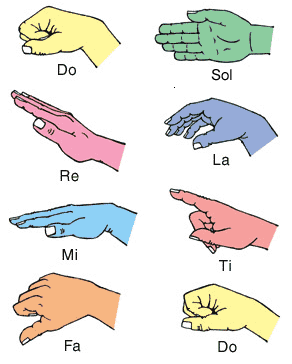
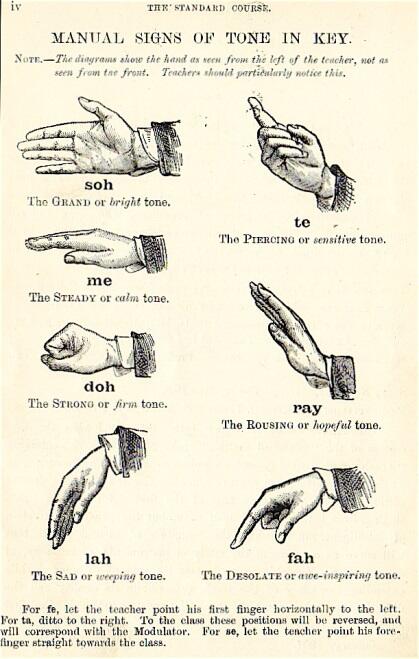
Children are taught the hand signs and the sound or pitch associated with them. Once learned the moving of the hand up or down indicates the height or depth of the pitch. Students make the signs in front of the body. Children are introduced to both classical and folk music and are taught to sign on pitch with this method.
The Kodály Method is actually a combination of methods borrowed from other teaching techniques. Kodály’s students and colleagues put together what is today called the Kodály Method.
Children are also taught set rhythm symbols and Names:
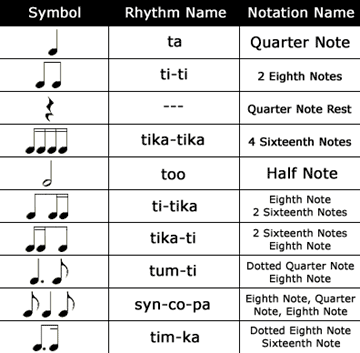
Using the Kodály method, children are taught to sing, play instruments, and dance from memory. The teacher presents the material to the students using the same method every time. When a new song is presented children hear it first, then sing it, understand it, read and write it, and create it. During the teaching process the teachers use rhythm, symbols, and syllables. They use the hand signs and the children are taught that their voice is an instrument. A typical second grade music class would learn the “Viennese Musical Clock” to learn the concepts of rhythm, melody, form, and harmony.
The Kodály Method has been shown to improve “intonation, rhythm skills, music literacy, and the ability to sing increasingly complex parts”.
Criticisms
Not everyone is a fan of Kodály or the Kodály Method. Some argue that those who have learned using the Kodály Method have a harder time learning staff notation. One teacher in particular, Kenneth McGuire of the University of Alabama, argued that students taught using this method have difficulty learning a single sixteenth note rhythm. The confusion may stem from the sixteenth note is called “ti” which is the same as the eight note. Mr. McGuire provides a solution to the problem. He teaches the sixteenth as “tu” retaining the “t” and adding the “u” oo sound:
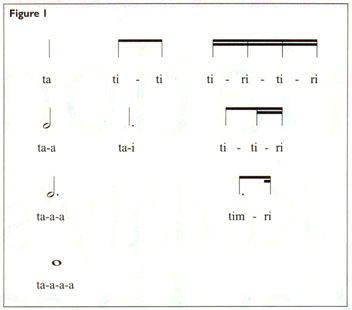
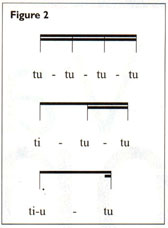
Conclusion
The Hungarian composer Kodály Zoltán contributed greatly to composing and the education of young. This Hungarian was also a collector of folk music that influenced his compositions. He was deeply troubled by the state of music education in his country and took steps to convince the socialist government to provided music education at the primary school level. His desire to improve the state of music education put him in the spotlight as an educator.
The Kodály Method was named for him but was actually a combination of several methods that were used successfully to teach music. Using the Kodály Method, teachers teach music to primary school students. The method is a combination of hand signs to indicate pitch and singing using the voice as the students’ first instrument. The method is used in eighteen different countries around the world including the United States.
The Kodály method has been used successfully to teach such concepts as rhythm, melody, form, and harmony. The method improves intonation, rhythm skills, music literacy, and the ability to sing increasingly complex parts.
Not all are fans of the method. Some instructors have developed a program to assist students with the transition to staff notation and and the sixteenth note.
Works Cited
D. “Kodaly: Cello works.” American Record Guide 66.5 (2003): 128(1). General Reference Center Gold. Gale. Web.
Classics for Kids® 1223 Central Parkway Cincinnati OH 45214. Web.
DeVries, Peter. “Reevaluating Common Kodaly Practices.” Music Educators Journal 88:3 (2001) 24-27.
Dobzsay, L. “The Kodály Method and Its Musical Bias.” Studia Musicologica Academiae Scientiarum Hungaricae. 1972 15-33.
Eösze, László/Mícheál Houlahan, Philip Tacka: ‘Kodály, Zoltán’, Grove Music Online ed. L. Macy.
“Friday Review: Music Review: Classical CD releases: Bartok: Music for Strings, Percussion & Celesta; Divertimento; Kodaly: Dances of Galanta Scottish Chamber Orchestra/ Mackerras (Linn) 4/5 pounds 13.99.” The Guardian (London, England) (2004): 20. General Reference Center Gold. Gale. Web.
“Kodaly, Zoltan.” The Columbia Encyclopedia. The Columbia University Press, 2000. 21428. General Reference Center Gold. Gale. 2008 Gale Document Number:A69213798. Web.
McGuire, Kenneth. “A variation on Kodaly’s rhythm syllable system.” Teaching Music 11.2 (2003): 58(3). General Reference Center Gold. Gale. Web.
“Opus”. Definition: musical composition: a musical work that has been created; “the composition is written in four movements”. Web.